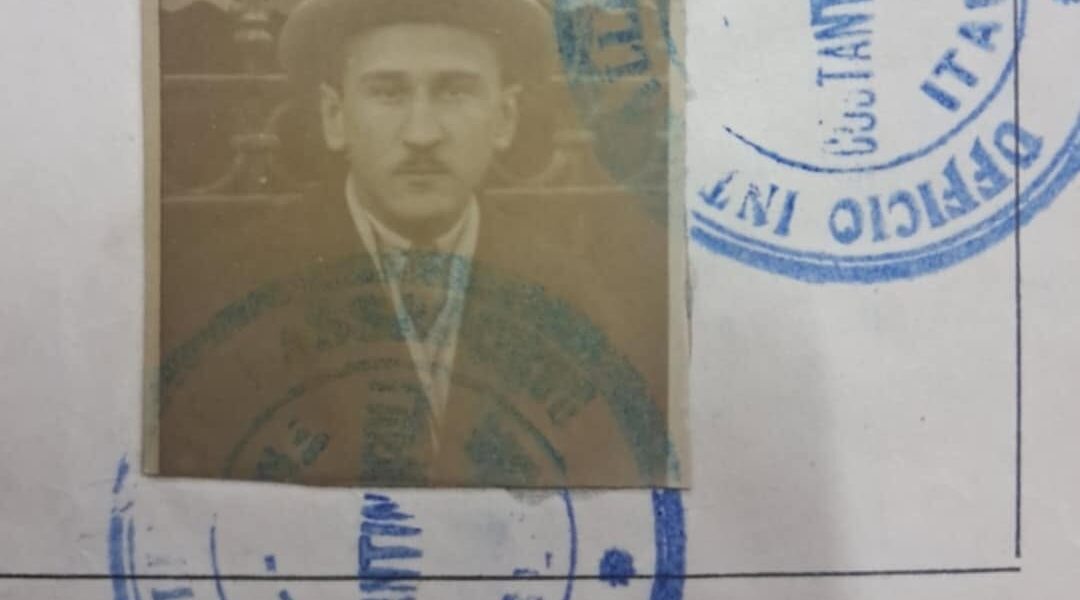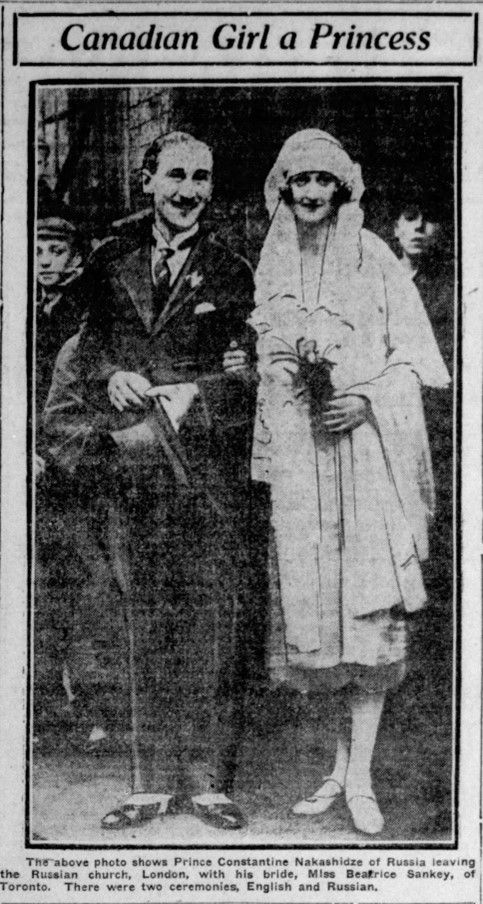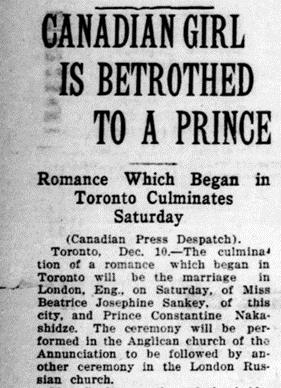
The story of Georgian diaspora in Canada is a testament to resilience, cultural preservation, and the pursuit of freedom. Georgia, located at the crossroads of Europe and Asia, has a rich cultural history dating back millennia. However, the 20th century brought intense hardship. After a period of independence in 1918-1921 Georgia was annexed by the Soviet Russia in 1921. This led to political repression, economic hardship, and cultural suppression under Soviet rule.
One of the first Georgian immigrants to Canada were primarily political émigrés and intellectuals who had left Georgia during the Soviet Occupation of country after 1921. Despite the fact that the first wave of Georgian immigration to Canada was not large in number, it made a meaningful and lasting contribution to Canadian society, culture, and innovation.
One striking example is Prince Nicholas Abkhazi, a Georgian nobleman who settled in Victoria, British Columbia, after World War II. Alongside his wife Peggy Abkhazi, he created the Abkhazi Garden, a breathtaking heritage garden that has become a symbol of resilience, love, and cultural preservation. The garden is now a treasured public space, showcasing the aesthetic sensibilities and deep-rooted connection to nature that Prince Abkhazi brought from his homeland.

Abkhazi Garden
Another notable figure is Michael Gregor (born Mikheil Grigorashvili), a Georgian-born aircraft engineer and inventor. After emigrating from Georgia following the Soviet takeover, Gregor pursued an impressive career in aviation, eventually contributing to aircraft development in North America, including Canada. His innovations in aircraft design during the early 20th century helped advance the field of aviation technology, reflecting the talent and technical expertise Georgian émigrés brought with them.

Left-to-right: test pilot George Ayde, Canadian Car and Foundry (Can-Car) representative David Boyd and aircraft designer Michael Gregor standing at a FDB-1 fighter. FDB-1 was a Canadian biplane fighter, designed in 1938 by Michael Gregor and manufactured by Canadian Car and Foundry
These individuals exemplify how even a small diaspora can enrich a nation—through art, science, and the enduring values of creativity and perseverance. The Canadian-Georgian Chamber of Commerce (CGCC) fosters meaningful two-way engagement between Canada and Georgia—not only in business but also in culture, education, and innovation. The CGCC actively promotes Georgian culture in Canada and Canadian culture in Georgia. By organizing cultural events and community initiatives, the Chamber fosters greater understanding and appreciation between the two nations. This cultural exchange strengthens people-to-people connections, deepens diplomatic and economic ties, and helps preserve the unique heritage of both communities within the global diaspora.
In the near future, we plan to organize the first-ever exhibition in Georgia dedicated to honoring the legacy of the Georgian diaspora in Canada—a historic initiative that will celebrate their contributions, resilience, and enduring connection to their homeland. Our years of work in this direction have already achieved great success, and now we are excited to share one such development.
Nikoloz Sepiashvili, the official representative of the Canadian-Georgian Chamber of Commerce in Georgia, has uncovered a historical archive belonging to a Georgian prince previously unknown to Georgian historiography, who lived in Canada. In this article, we provide a brief overview of this remarkable archive.
Prince Constantine Nakashidze1 was born on December 26, 1902. His father, Prince Mikheil Nakashidze, was a prominent Gurian businessman, historically recognized for opening one of the first tea factories in Zedubani, a town in western Georgia. Constantine’s mother, Princess Sophia Dadiani, came from the prestigious Georgian noble family, the House of Dadiani
According to documents found in the aforementioned archive, Constantine was forced to flee Soviet-occupied Georgia in 1921 at the age of 19 for personal safety reasons. He first traveled to Italy, then to Great Britain, where he studied Law at the University of Cambridge. His parents remained in Georgia. After completing his studies, Constantine emigrated to Canada, where he met his future wife.
Miss Beatrice Josephine Sankey and Prince Constantine Nakashidze were married in London in 1925. At the time, the Canadian press was abuzz with news of the wedding between a Toronto girl and a Georgian prince. Among the materials discovered in the archive brought to Georgia are congratulatory letters from Constantine’s mother, Princess Sophia Dadiani, sent from Soviet Georgia to the newlywed couple. The couple had two children: Miss Zoya Nakashidze and Miss Darejan Nakashidze.


From the archive, we learn that in the early years of his career, Constantine worked at several law and notary firms in Toronto. Additionally, he had connections to the oil industry in Soviet Georgia. The documents suggest that he served as a consultant for the Gurian Oil Syndicate in London, a Soviet Georgian oil company. Unfortunately, no outcomes or records of any deals from this connection are known.

After some time, Constantine Nakashidze founded his own brokerage firm, C. M. Nash and Co. The firm’s name was likely an abbreviation of both his and his father’s names—Constantine and Mikheil Nakashidze. Prince Nakashidze was involved in the gold mining business as well as real estate brokerage. He was also a member of the Board of Trade Club of Toronto.

Photo of Prince Constantine Nakashidze from his Residency Document, issued in London in 1925
It is also worth noting that his wife, Princess Beatrice Nakashidze, was actively involved in the real estate business alongside him. In 1960, Mrs. Nakashidze was elected Chair of the Women’s Committee of the Toronto Real Estate Board (TREB). The Toronto Real Estate Board, one of the largest and most influential real estate associations in Canada, served as the governing body for real estate professionals in the Greater Toronto Area (GTA).
At the end of the article, there is a mysterious aspect of Constantine Nakashidze’s career connected to the Canadian Armed Forces during WWII. In the found archive, several recommendation letters suggest his acceptance into the Department of National Defence, all dated 1942. While there’s no definitive proof that he ultimately served, these documents confirm he at least applied for service, with letters from the Department of National Defence providing guidance on the application process. Hopefully, future researchers will be able to uncover more details on this topic.


Until his death, Constantine kept a package of Georgian tea from his father’s tea factory, which he brought with him to Canada when he was forced to leave Georgia. The packaging is written in Russian:
“Русский Чай – “ЗЕДУБАНЬ” чистый вес 1/16 ф. Цена 10 К. Князя М.М. Накашидзе” – Russian Tea – “ZEDUBAN” net weight 1/16 F. Price 10 K. by Prince M.M. Nakashidze”.


Article by Nikoloz Sepiashvili, Official Representative of the Canadian-Georgian Chamber of Commerce in Georgia. We together support, connect and advocate for expanding the Canadian-Georgian exchange in business and beyond.
Footnotes:
- The Georgian as well as Russian Imperial nobility had a different titles, and many were hereditary. The use of the title ‘Prince’ in Western translations often applied to a broad range of nobility, and it did not necessarily indicate that the person holding the title was a direct descendant of a royal house. In English, “Prince” was an easy and commonly understood term to describe anyone of notable nobility. ↩︎